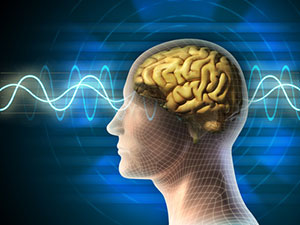 If you’re wondering what the heck a “binaural beat” is you’re not alone. It’s basically about trying to align your brain waves with a desired frequency to influence your state-of-mind. Binaural beats refer to a pulsing sound we hear when two different sounds, each with different frequencies, are fed into our ears.
If you’re wondering what the heck a “binaural beat” is you’re not alone. It’s basically about trying to align your brain waves with a desired frequency to influence your state-of-mind. Binaural beats refer to a pulsing sound we hear when two different sounds, each with different frequencies, are fed into our ears.It is a phenomenon of human physiology, like where our ears are and how we process audio, that makes binaural beats real things. Yeah, I know, I answered that question a little early in the article, right? Actually I didn’t. I didn’t say if it was a helpful real thing. That part is yet unanswered. Curious? I hoped you would be.
First let me ask another question. Is hypnosis a helpful real thing? I know for absolute certain that trances are real. We go into and out of them all the time. But does that make them the doorway to changing deep-seated beliefs and behaviors in people. The scientist that lives in my head says there is some dearth of evidence on that last point. So it is with binaural beats. They are mathematically real, but do they actually DO anything for us?
When one of our ears is presented with a sine wave of a certain frequency, and the other ear is presented with a sine wave of a different frequency, our brains make it feel like we’re hearing a rhythmic thrumming or beating. We can control the source audio frequencies to speed up or slow down these beats in our heads. That part is undeniably and scientifically real. What may not be so real is the effect these beats have on our mood, minds, behavior, etc.
Neuroscience has lots of data to support the relationship between brainwave frequencies and mood. For example, alpha waves (8-14 Hz) occur in the brain when a person is relaxed but awake. If a person is focused and alert, beta waves (14-30 Hz) occur. There are associations with other frequencies but this should give you the idea.
The idea behind how to make this information useful is that it may be possible to “entrain” these brainwave frequencies in a person by having them listen to tones in headphones. If, say the proponents, listening to rhythmic hums beating at 10 Hz can cause alpha waves in the brain, then we can cause the relaxed feelings associated with alpha waves. We have evidence of the first direction (when a person is relaxed, alpha waves tend to occur), but whether it works in reverse (we can make alpha waves occur which will then cause relaxation) is another matter.
There are companies selling mp3s and CDs with music and sound effects mixed with binaural beats to produce a specific effect, or combination of effects. For example, there are programs for smoking cessation, stress reduction, memory improvement, meditation, losing weight, healing, etc. Wow. It really would be nice to think that all you have to do is listen to some music and you could stop smoking wouldn’t it? So what is the science behind all this?
Actually there is some science to support a proof-of-concept that brainwaves can be entrained as explained above, and that measurable changes in behavior can occur as a correlation in blind experiments (Lane JD, Kasian SJ, Owens JE, Marsh GR, Duke University, 1998 is one such). So that’s a good thing. I like actual evidence. It is logical to then assume that if binaural beats can entrain brainwaves of predictable frequency followed by predictable state of mind, behaviors associated with the particular states of mind are likely.
However, there is less evidence that binaural beats can make you lose weight or quit smoking. There is anecdotal evidence for this, as there is with hypnosis doing the same thing, but let us not forget the power of the placebo effect. If someone knows they have purchased the weight-loss program mp3 or CD, they are likely to already be motivated. And expectation effects could see them through to losing weight. Results that rely on that effect are not usually repeatable or consistent. Some people are just better at changing their behavior than others, I imagine.
So I think I have shown that binaural beats are not mythical. They’re definitely real. And there is some very convincing and real scientific evidence to support the possibility of brainwave entrainment to affect mood and state-of-mind. Whether those other things are possible remains to be studied. Your mileage may vary. I’d really like to see a double-blind experiment lead to better memory in the long term, or weight-loss. Then I’ll really go “all-in” with binaural beats as a useful therapy tool. Until then, at least I know my iPod can play me some alpha waves and I’ll probably relax. That’s pretty cool by itself. You can get pre-produced binaural beats here: http://audiorecordingathome.com/binaural-brainwave-entrainment
If you want to delve into the world of audio production immediately, you can start a home recording studio on your PC in the next 30 minutes or so – for free – just by filling out the form at the top right of this page. Then you can learn to create your own binaural brainwave entrainment audio. Get started without spending a dime! We also have free goodies;).